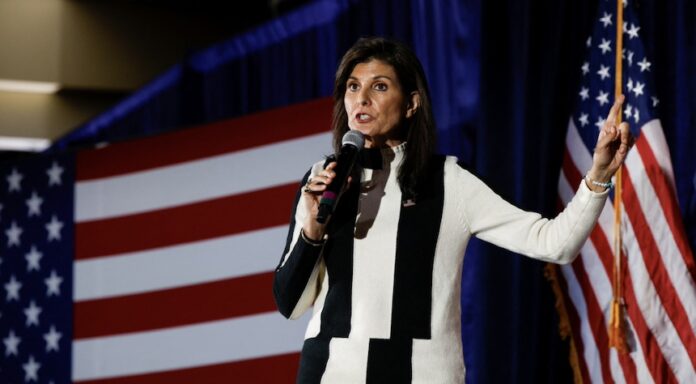Donald Trump has won the Pennsylvania Republican Primary with 82.8%. The Keystone State primary is closed. Only Republicans are allowed to vote.
Is this cause for concern? Trump won Pennsylvania by 44,000 votes in 2016. Biden won Pennsylvania in 2020 by about 80,000 votes. Former candidate Nikki Haley who dropped out of the race a month earlier received 16.5% in this year’s primaries, or approximately 156,000 votes. This is a good chunk of the electorate for a state that’s so evenly split.
We can assume a large portion of Haley’s voters will be those who “hold your nose, and vote for Trump.” David Drucker, of The Dispatch, writes that “Protest Votes in Favor of Haley are a persistent problem to Trump, signaling a part of the GOP’s dissatisfaction with him despite being the presumptive candidate.”
Aaron Blake, of the Washington Post, compiled a “protest vote” list.
Percentages voting against Trump in closed (i.e. GOP-only) primaries/caucuses:
3/2 Idaho 15%
3/5 Okla. 18%
3/5 Tennessee 19.5%
3/5 Utah 44%
(Haley drops out)
3/19 Florida 19%
3/19 Kansas 24.5%
4/2 Conn. 22%
4/2 N.Y. 18%
4/23 Pennsylvania 16.5%— Aaron Blake (@AaronBlake) April 24, 2024
The “protest vote” for Trump is not important in most of these states. Except for Pennsylvania.
Republicans Against Trump wrote that this is a “huge red flag” for Trump’s campaign in a state considered a battleground. Many Republicans will never vote for Donald Trump.
It’s true. And it’s also true that many Democrats, as they did in 2016 and 2020, will vote for Trump.
The Trump team must ask themselves where the votes were lost in Pennsylvania.
Biggest takeaway from yesterday’s primary in Pennsylvania: Trump is hemorrhaging votes in the Philadelphia suburbs.
Look at the Nikki Haley protest vote in:
Montgomery – 25%
Delaware – 24%
Chester – 24%
Lancaster – 20%
Bucks – 19%Major red flags for Republicans.
— Matt McDermott (@mattmfm) April 24, 2024
McDermott may have a valid point if all things are equal. All things aren’t equal, particularly when it comes down to the support of Donald Trump. Since 2008, the anti-Trump vote is a given. How many suburban votes will still go Republican in November, is the question.
Miami Herald:
Michael Barone, a Washington Examiner political analyst and resident fellow emeritus of the American Enterprise Institute (a right-leaning research institute), wrote on X that her 17% margin “does not necessarily” show Trump to be a weak candidate.
Barone wrote: “Party Registration is a Lag Indicator. And in a state such as PA, where people tend to stay put for a long time, the Republican body will include many people, especially wealthy college graduates, who vote Democratic regularly in November.”
Biden wants to use the Haley votes to his advantage and incorporate them into his campaign. He’s also looking to get money from Haley’s donors.

The Dispatch:
Sources familiar with the 2024 strategy of the president said that the campaign was “testing messages” with disenchanted Haley supporters to determine what appeals work best in wooing them and how Biden could incorporate them into his reelection plan. Conversations between wealthy Biden supporters and their Republican counterparts, who supported Haley’s presidential campaign, have intensified.
The probability is that the majority of Haley voters in November will vote Republican. In a tight election, like the one expected in Pennsylvania, every vote is important. Trump and his team are aware of this. That’s why they work overtime to get as many Haley supporters back in the fold.


